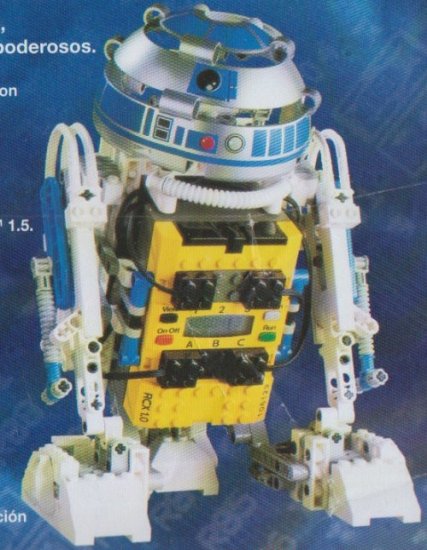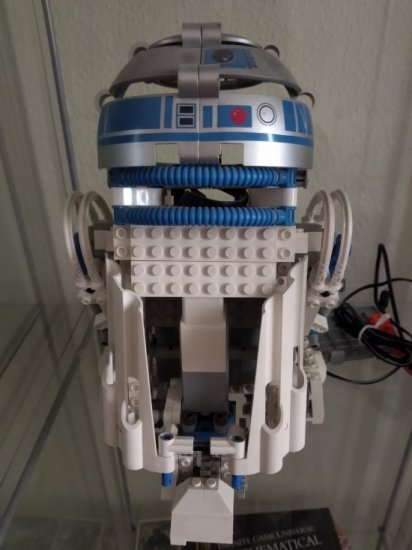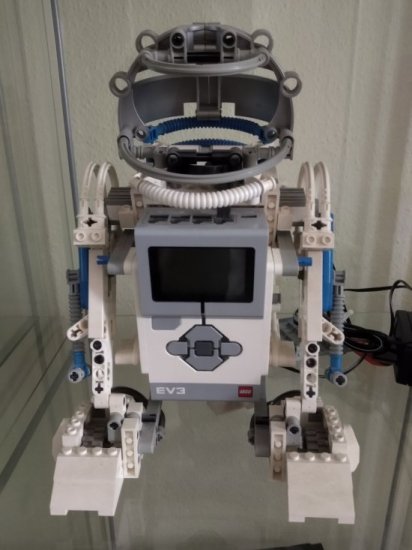I was listening to a Hanselminutes podcast episode about LEGO education's new Spike Prime set, when I heard something quite interesting: After generations of C-based firmwares for the LEGO Mindstorms family of intelligent bricks, the Spike Prime actually runs a MicroPython micro-controller. I feel joy but at the same time I feel a bit old, to think how much we've advanced so that now any kid can easily build and code a robot using Python...
When I was young, I fell in love with the original Mindstorms, and since then, I've collected all three generations (four if we count the Micro Scout). While I gifted most of robots and pieces last year to an electronics and robots lover friend, I still remember the fun weekends and nights learning how to build the robots and how to modify the firmware to code them with my language of choice. Steps that you don't need to take anymore it seems :)
If you haven't heard before about the Mindstorms LEGO family, hackeducation.com has a small but nice technical summary, and I will provide links to the Wikipedia relevant versions too below.
LEGO Mindstorms Micro Scout
Let's be honest: The Micro Scout was a glorified motor and IR receiver that came with the pieces and instructions to build a cool AT-AT with the Dark Side Developer Kit, or an even cooler R2-D2 with the Droid Developer Kit.
I don't keep decent-quality photos of it but a photo from the instructions is good enough:

LEGO Mindstorms RCX
The RCX was the first generation, and it was released in 1998 but I got mine either on 1999 or 2000, I don't remember exactly.
It was a v1.5 (there were a v1.0, v1.5 v2.0 revisions). I coded it in C at first, then in C# with LEGO.NET. It was the most entertaining one to "hack" as there was no official custom firmware support, plus initially I had to connect it via a serial port. I bought a USB IR tower later and what a difference! It also meant more portability as serial ports dissapeared long ago :)
I had all expansions I could get my hands of, from Vision Command (camera was terrible but still great to do color recognition back then) to Exploration Mars (the springs/suspensions and different sized wheels were awesome), plus some extra LEGO Technic pieces.
At the end of the instructions you could see the back of a modified R2-D2 using the RCX brick. Again I don't keep non-terrible photos of my build, but was the same as the one in the following image. Note that the R2-D2 head is turned, we're shown actually the back of the droid, it is like a V-shape seen from above, with the tip forward, not backward:

LEGO Mindstorms NXT
The second generation of Mindstorms bricks, the NXT, allowed a much easier development as if I recall correctly the specifications of the commands were published so interacting with it was very easy. I got mine the year it was released, in late 2006, during a trip to Australia.
I coded on it with C#, using NXT.NET but also directly from Microsoft Robotics Developer Studio. As you can see not only you didn't needed a custom firmware, it also provided an IDE-friendly interface, especially since you could send the data and commands via Bluetooth. You could even use a PocketPC PDA to remote-control it.
LEGO Mindstorms EV3
The EV3 is the current generation of Mindstorms, released in 2013.
Much more powerful, it is so hacker-friendly that supports booting custom firmwares via Micro-SD card (instead of overriding the built-in one), LEGO has published the full source code of the operating system, and is even compatible with the NXT sensors, so it has really very few limitations to what you can do, except of course your imagination.
With this brick I coded mostly using the bricks UI, as it is so powerful it was handy to just drag & drop blocks and change a few parameters (by the way, you can code programs just with the own brick on its own!). But for a change I started building a NodeJS library to program it. I didn't went too far with the project, but what I built worked nicely and was a fun exercise in reading the operating system's source code and adapting it to Javascript.
Although I skipped trying to do it with the NXT version, my beloved R2-D2 was due for an update, so my last project before deciding to stop playing with the Mindstorms family is an EV3-based R2-D2:


The front is missing some panel or cover, but I wanted easy access to the steering wheel/leg until was finished, and it was missing also the famous beep sounds (which you can add to the EV3 too), but is mostly functional and moves forward, backwards and rotates (plus can be controlled remotely via Bluetooth).
I never got to build real sumo or racing robots, but I feel that with Mindstorms, I've spent two decades doing almost the same, just forgetting about the hardware and solding aspects. Thank you LEGO for providing such great tools and being so developer-friendly.
Tags: Development